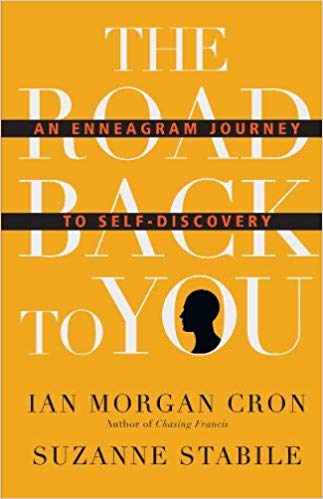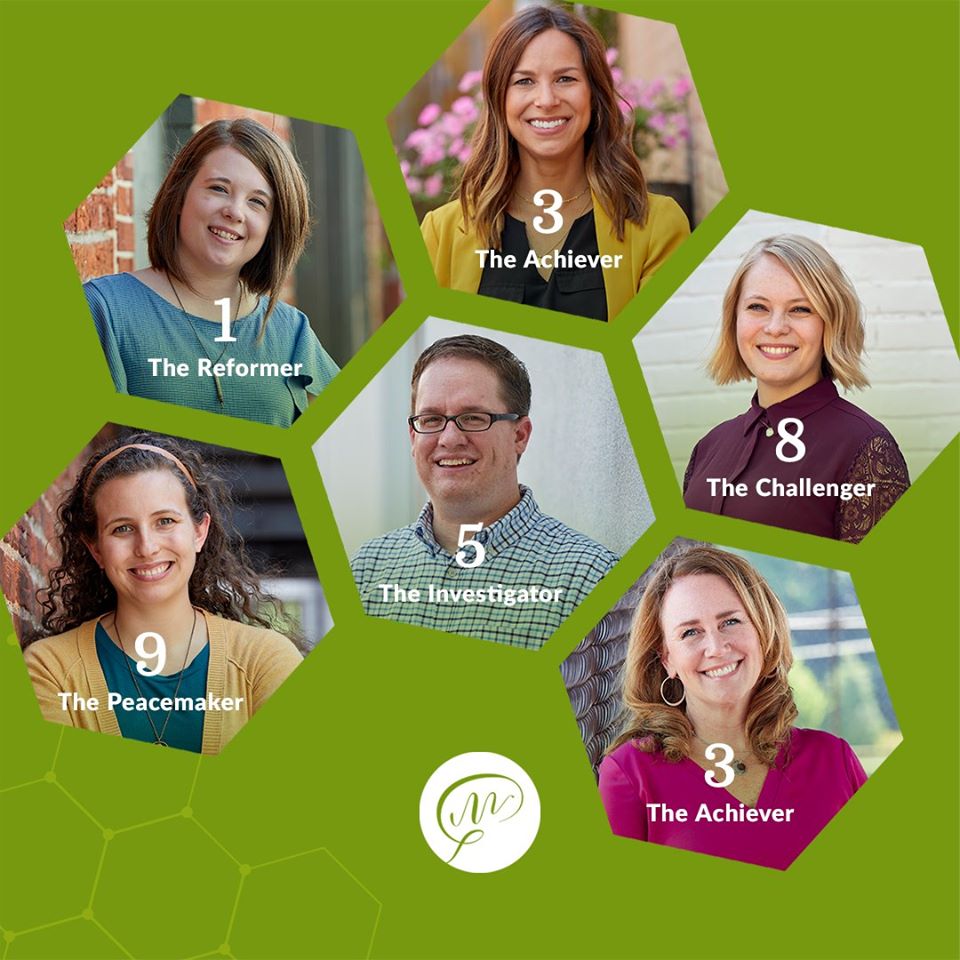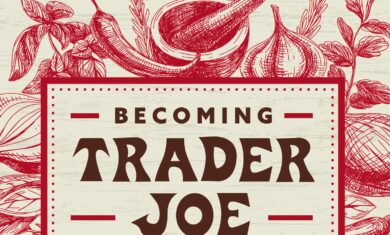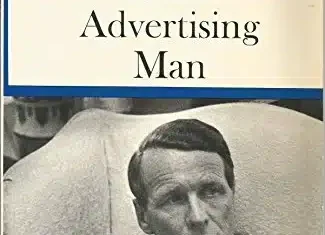As I did last month with This is Marketing, I’ve finished reading this book (after starting it a while ago, and then restarting it this month) and have quite a few notes to share.
The Road Back to You is a great look at the enneagram, which I’ll describe much more below.

If you’re not familiar with the Enneagram, it defines nine personality types that everyone falls into. At GreenMellen, we’ve enjoyed digging into it, as the insights we can learn about one another can be incredibly helpful in our day-to-day interactions.

The book starts with a lot of reasons why you should try to uncover your enneagram type for your own benefit:
“To know oneself is, above all, to know what one lacks. It is to measure oneself against Truth, and not the other way around. The first product of self-knowledge is humility,”
“Sooner or later we must distinguish between what we are not and what we are. We must accept the fact that we are not what we would like to be. We must cast off our false, exterior self like the cheap and showy garment that it is
“There is one quality that trumps all, evident in virtually every great entrepreneur, manager, and leader. That quality is self-awareness. The best thing leaders can do to improve their effectiveness is to become more aware of what motivates them and their decision-making.”
“Accepting oneself does not preclude an attempt to become better,”
“I don’t want to be pigeonholed or put in a box.” People express this concern to Suzanne and me all the time. Fear not! The Enneagram doesn’t put you in a box. It shows you the box you’re already in and how to get out of it.
On the flip side of that is a great analogy that Ian shares about how this can affect your interactions with others:
Suzanne’s friend Rebecca is a nurse who works with children with profound visual impairment. As part of her job, she leads support groups for parents whose kids have just received a diagnosis. These parents, mostly young mothers, are confused, hurt and sometimes angry, and Rebecca provides guidance about navigating challenges they never suspected life would visit on them.
Apart from the practical advice, the most invaluable part of the workshops comes when Rebecca hands the parents eyeglasses that correlate to each child’s specific disability. Almost always, the parents burst into tears. “I had no idea that this is the way my child sees the world,” they tell her. Once they have the experience of observing through their children’s eyes, they never experience the world in quite the same way again. They may still be angry about the diagnosis, but they’re not frustrated with their child, because even a brief exposure to the reality of how hard life is for these kids inspires in their parents only compassion.
This is the gift of the Enneagram. Sometimes people talk about the Enneagram as a tool that reveals the lens through which people see the world.
While this short post can’t begin to express the depth of each type, I’ll share some quick thoughts on each to help give you an idea of how things are broken down.
It’s important to know there there is no “best type”, or even any type that is better than another. Every type brings amazing things to the world, and every type has tendencies that need to be kept in check for their own well-being (and the well-being of those around them).
Type 1: The Perfectionist
On our team at work, this is Ali and Ashlea, and we have a few clients that fit in here as well.
Famous Ones include Jerry Seinfeld, Nelson Mandela, and Hillary Clinton.
- Ethical, dedicated and reliable, they are motivated by a desire to live the right way, improve the world, and avoid fault and blame.
- Healthy Ones are committed to a life of service and integrity. They are balanced and responsible and able to forgive themselves and others for being imperfect. They are principled but patient with the processes that slowly but surely make the world a better place.
I also liked this quote about Ones:
From the time they get up to the time they lie down, Ones perceive a world rife with errors and feel a bounden duty to correct it.
Type 2: The Helper
Personal Twos that I know include my wife Kelly, as well as local WordPress Helper Kathy Drewien. If you know either of them, I think you’ll quickly realize how eerily accurate this system can be!
Famous Twos include Mother Teresa, Desmond Tutu, and Princess Diana.
- Warm, caring and giving, they are motivated by a need to be loved and needed, and to avoid acknowledging their own needs.
- Healthy Twos can often name their own needs and feelings without fear of losing relationships. They are generous in their efforts to love well and care for others. These happy, secure Twos also have appropriate boundaries, knowing what is theirs to do and what is not. They create a comfortable, safe space for others and are often considered to be a friend to many. Loving and lovable, they adapt well to changing circumstances and are aware of the true self that exists beyond their relationships.
This highlight from the chapter also jumped out at me:
Average Twos tell Suzanne and me they have the ability to sense and then fulfill the needs of others. The key word here is sense. You don’t have to tell Twos what you require; they just know. The problem is they assume everyone has the same ability to sense other people’s inner life as well.
Type 3: The Performer
Natalie on our team is a Three, as are a few of the partners that we work with quite often.
Famous Threes include Taylor Swift, Mitt Romney, and Tom Cruise.
- Success-oriented, image-conscious and wired for productivity, they are motivated by a need to be (or appear to be) successful and to avoid failure.
- Healthy Threes have transcended the goal of merely looking good and are moving toward being known and loved for who they are, not for what they accomplish. They still love to set goals, rise to challenges and solve problems, but their self-worth is not tied to these things. They try to balance their abundant energy between work, rest and some kind of contemplative practice, recognizing the importance of being instead of doing. They feel valuable, which unleashes a tender benevolence that is focused on the common good.
Type 4: The Romantic
I’m not sure who in my personal life is a Type Four, which is kind of surprising as creative types are often in this group.
Famous Fours include Amy Winehouse, Thomas Merton and Vincent van Gogh.
- Creative, sensitive and moody, they are motivated by a need to be understood, experience their oversized feelings and avoid being ordinary.
- Healthy Fours have a considerable emotional range, and they manage it by not speaking or acting on every feeling they have. They know they don’t have to be special to win God’s unconditional love. These Fours have found a way to live, for the most part, outside the pattern of shame and inferiority. They are deeply creative, emotionally honest and connected, and attuned to beauty.
Type 5: The Investigator
Among other people, this is me.
Famous Fives include Stephen Hawking, Dietrich Bonhoeffer and Bill Gates.
- Analytical, detached and private, they are motivated by a need to gain knowledge, conserve energy and avoid relying on others.
- Healthy Fives have a long view of things. They manage an appropriate balance between participation and observation, engaging with others comfortably and demonstrating true neutrality. These Fives are likely to have depth in knowledge in several areas of their lives, and they willingly share their findings with others. They live in a world of abundance, seeing themselves as part of the whole environment instead of separate from everyone and everything.
This quote struck me as being very accurate to how I often feel:
Fives collect knowledge. Knowledge and information of almost any kind (even the strangest information) provide Fives with a sense of control and a defense against feelings of inadequacy. Fives also collect information or knowledge because they don’t want to appear foolish or uninformed, or be humiliated for not having the correct answer.
Type 6: The Loyalist
Sixes are thought to be the most common number, but I only have a few people that I know of to be in this group.
Famous Sixes include Ellen DeGeneres, Jon Stewart, and Frodo Baggins.
- Committed, practical and witty, they are worst-case-scenario thinkers who are motivated by fear and the need for security.
- Healthy Sixes have learned to trust their own experiences of life. They are aware that certainty and accurate predictability are not likely in most situations. They are productive, logical thinkers who almost always organize their thoughts and actions around what would be most advantageous for the common good. Loyal, honest and reliable, healthy Sixes are clear-eyed judges of character. These Sixes have come to believe that in the end everything will be all right.
Type 7: The Enthusiast
I have a handful of friends that are in this group, but none of my immediate family or coworkers are.
Famous Sevens include Robin Williams, Wolfgang Amadeus Mozart, and Stephen Colbert.
- Fun, spontaneous and adventurous, they are motivated by a need to be happy, to plan stimulating experiences and to avoid pain.
- Healthy Sevens know that often “less is more.” They are aware of the energy they have invested in manufacturing happiness and they know that joy is a gift or grace that can only be received. They have embraced a full range of human emotion and they are growing in their ability to accept life as it is rather than as they want it to be. They are able to incorporate pain and disappointment into the whole of their lives, rather than merely avoiding it. When Enthusiasts are in a healthy space, they are not only fun and adventurous but also spiritually grounded, practical and resilient.
Sevens are fun and often seem fearless, but this quote from the book jumped out at me:
It’s hard to get your head around it, but Sevens are every bit as fearful as Fives and Sixes. Where they differ is in the way they defend themselves against it—Fives ward off fear with knowledge, Sixes with pessimism and Sevens with inexhaustible optimism.
Type 8: The Challenger
On our team, Elena is certainly in this group. I know other creatives that fit in here as well.
Famous Eights include Martin Luther King Jr, Muhammad Ali, and Angela Merkel
- Commanding, intense and confrontational, they are motivated by a need to be strong and avoid feeling weak or vulnerable.
- Healthy Eights are great friends, exceptional leaders and champions of those who cannot fight on their own behalf. They have the intelligence, courage and stamina to do what others say can’t be done. They have learned to use power in the right measure at the right times, and they are capable of collaborating and valuing the contributions of others. They understand vulnerability and even embrace it at times.
One quote jumped out at me regarding Eights:
Eights don’t feel like they have to be the person in control—they just don’t want to be controlled.
Type 9: The Peacemaker
On our team, this is Brooke and we’re so glad it is. Interacting daily with many of our clients, her ability to see both sides of every situation helps keep things running smoothly.
Famous Nines include Barack Obama, Bill Murray, and Renee Zellweger.
- Pleasant, laid back and accommodating, they are motivated by a need to keep the peace, merge with others and avoid conflict.
- Healthy Nines are natural mediators. They see and value the perspective of other people and can harmonize what seem to be irreconcilable points of view. They are unselfish, flexible and inclusive. These Nines are seldom attached to their own way of seeing and doing things. They’ve learned to make decisions based on the right priorities. They are inspiring, self-actualized people.
What type are you?
If you’ve not dug into the enneagram before, this quick list might have you leaning in one direction or another, but it’ll take some time to know for sure. In my case, I was a few months of waffling between Types 1, 3 and 5. The degree to which I dug in, by itself, leaned heavily toward being a Five. 🙂
If you know your type, please leave a comment below and share it with us.
If you don’t, I encourage you to take a few online quizzes to help narrow it down (there are a lot of them out there), and then read Ian’s book to learn even more.




Great summary, thank you! Just to point out that the word “tendencies” probably needs to be used in place of “tenancies”, in the sentence, “Every type brings amazing things to the world, and every type has tenancies that need to be kept in check for their own well-being (and the well-being of those around them).”
(Eek yes, I noticed this is just above Type 1: The Perfectionist!)
Good catch, thanks! It’s been fixed now.